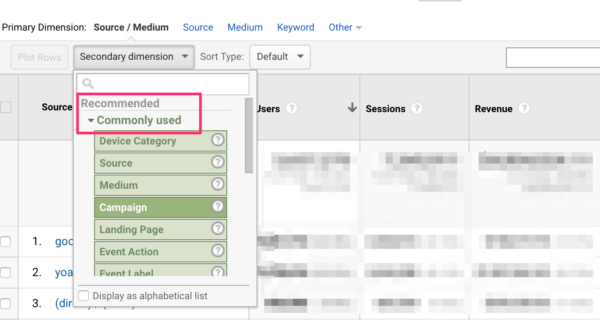From Data to Method: Just How Secondary Dimensions Elevate Your SEO Efforts
From Data to Method: Just How Secondary Dimensions Elevate Your SEO Efforts
Blog Article
Enhance Your Data Evaluation Using Additional Dimensions
In the realm of information evaluation, key metrics frequently provide a fundamental understanding of efficiency or trends. Nonetheless, real depth of understandings lies in the assimilation of second dimensions. These added layers of data supply a nuanced sight that can unwind intricacies and nuances not obvious in the beginning glance. The capacity to dissect information via different lenses opens up doors to a world of possibilities that can change just how companies translate and act upon their information. The strategic use of second dimensions raises analysis past the surface area level, assuring a wealth of untapped prospective waiting to be uncovered.
Recognizing Additional Dimensions
Second measurements in data evaluation describe extra features or metrics that supply much deeper understandings when combined with main data measurements, boosting the total understanding of the dataset. These extra dimensions use a more detailed sight of the information, enabling analysts to discover surprise patterns, relationships, and fads that might not appear when only thinking about key measurements.
By incorporating second measurements into data analysis, analysts can gain a much more nuanced understanding of the factors affecting the key metrics. In advertising evaluation, key measurements might consist of basic consumer demographics like age and sex, while secondary measurements might include variables such as purchasing behavior, preferences, or geographic area. By combining these main and secondary measurements, analysts can develop a lot more detailed client accounts, making it possible for more targeted and efficient advertising techniques.
In addition, secondary dimensions can assist in determining correlations between various variables, leading to even more accurate predictive modeling and decision-making. They make it possible for experts to explore data from several perspectives, improving the insights attracted from the dataset and ultimately enhancing the top quality of analysis and tactical suggestions.
Benefits of Additional Measurements
When thinking about data evaluation, integrating additional measurements provides a wide range of advantages that significantly boost the depth and breadth of understandings stemmed from key information dimensions. One of the essential advantages of additional measurements is the capacity to give context to main data. By adding secondary measurements such as time, place, or demographic info to the evaluation, researchers can get a much more detailed understanding of the primary data factors - secondary dimensions. This contextual details can assist identify patterns, patterns, and connections that may have or else gone unnoticed.
Furthermore, second dimensions can likewise help in segmenting data, enabling an extra in-depth analysis of certain parts within the main information. This division can bring about even more targeted strategies and activities based on the unique qualities of each segment. Furthermore, secondary measurements can assist in confirming searchings for from main data measurements, giving a more durable and trusted basis for decision-making.
In essence, the advantages of integrating secondary dimensions right into data evaluation are very useful, offering richer understandings and allowing more enlightened decision-making processes.
Implementing Secondary Dimensions Successfully
When incorporating second measurements, it is vital to align them with the key dimensions to obtain much deeper insights right into the data. It is vital to choose secondary dimensions that complement the key data without causing noise or complication in the analysis.
In addition, consider the scalability of the additional measurements throughout various datasets or evaluations. Ensure that the picked additional dimensions can be regularly applied and interpreted across different scenarios to keep the stability and uniformity of the evaluation. In addition, establish a methodical process for integrating second dimensions right into the analysis operations to streamline the analysis of results. By carrying out secondary dimensions properly, experts can enhance the deepness and accuracy of their information evaluation, leading to even more informed decision-making and actionable insights.
Advanced Techniques With Second Measurements
For an extra advanced technique to data analysis, incorporating second measurements can substantially raise the depth of understandings gotten. Advanced strategies with second dimensions entail more detailed approaches to draw out useful info from data sets. One such strategy is accomplice evaluation, where information is segmented based upon specific qualities or habits to track patterns over time. This technique permits a much deeper understanding of how various teams develop and interact with your services or product.
One more innovative technique is regression evaluation, which helps identify partnerships in between variables and exactly how they affect each various other. By including additional dimensions, such as group information or customer habits, to regression versions, you can reveal a lot more nuanced understandings and make more accurate forecasts.

Situation Studies: Additional Measurements in Activity

In one more scenario, a doctor leveraged additional measurements to enhance source allocation. By examining person end results in relation to geographical location, the company identified areas with high readmission rates. This resulted in the implementation of targeted intervention programs in those regions, eventually enhancing patient care and lowering medical care costs.
These case research studies show the power of secondary measurements read more in uncovering useful insights that drive critical decision-making. By delving deeper right into data evaluation beyond key metrics, companies can get a much more thorough understanding of their operations and customers, bring about more reliable and enlightened business approaches.
Final Thought
Finally, the consolidation of second dimensions in data analysis is important for obtaining a other detailed understanding of underlying variables and fads. By making use of techniques such as friend evaluation and regression analysis, organizations can reveal concealed understandings and make more educated decisions. Second dimensions add deepness and breadth to information analysis, enabling businesses to discover data from multiple point of views and drive a lot more reliable results.
In advertising and marketing evaluation, primary measurements might consist of standard client demographics like age and sex, while secondary measurements can include variables such as purchasing behavior, choices, or geographic location.When taking you can try these out into consideration data analysis, integrating second measurements provides a wide variety of advantages that substantially improve the depth and breadth of understandings acquired from primary data measurements.Moreover, secondary measurements can also aid in segmenting data, allowing for a more thorough evaluation of details parts within the primary data. Additionally, additional measurements can help in confirming searchings for from main information dimensions, giving a more durable and reliable basis for decision-making.
When including secondary dimensions, it is critical to align them with the key dimensions to obtain much deeper understandings into the information.
Report this page